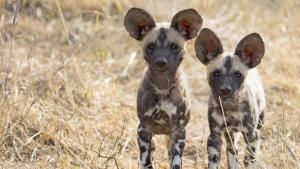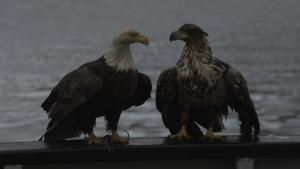- Middle East - English
Americas
Asia & Oceania
Middle East & Africa
Europe
SHOWS
SHOWS BY SUBJECT
DON'T MISS
 Building Impossible with Daniel AshvilleLa Mega Stadium
wednesday 24 april 2024 at 7:00pm
Building Impossible with Daniel AshvilleLa Mega Stadium
wednesday 24 april 2024 at 7:00pm
 Extraordinary Birder With Christian CooperExtraordinary Birder with Christian Cooper: New York City
wednesday 24 april 2024 at 8:00pm
Extraordinary Birder With Christian CooperExtraordinary Birder with Christian Cooper: New York City
wednesday 24 april 2024 at 8:00pm
 Life Below Zero: First AlaskansStrong Foundation
wednesday 24 april 2024 at 9:00pm
Life Below Zero: First AlaskansStrong Foundation
wednesday 24 april 2024 at 9:00pm
 PhotographerPaul Nicklen & Cristina Mittermeier: Win or Die
wednesday 24 april 2024 at 10:00pm
PhotographerPaul Nicklen & Cristina Mittermeier: Win or Die
wednesday 24 april 2024 at 10:00pm
 PhotographerMuhammed Muheisen: Finding the Light
thursday 25 april 2024 at 7:00pm
PhotographerMuhammed Muheisen: Finding the Light
thursday 25 april 2024 at 7:00pm
TOP SHOWS
VIDEOS
Don't Miss
Most Viewed
Secrets of the Octopus
Show: Secrets of the OctopusFight Science
Show: Fight ScienceGenius - Scientist
Show: GeniusThe Hot Zone
Show: The Hot ZoneSavage Kingdom
Show: Savage KingdomNaked Science
Show: Naked ScienceEurope from Above
Show: Europe from AboveKatie’s New Face
Show: Katie’s New FaceHard Time: Locked Up
Show: Hard Time: Locked Up
PHOTOS
Photo of the day
![A lioness takes down a buffalo. This... [Photo of the day - 24 APRIL 2024]](https://assets-natgeotv.fnghub.com/POD/15180.ThumbL.jpg)
![At Quaife Engineering, Dave King and... [Photo of the day - 23 APRIL 2024]](https://assets-natgeotv.fnghub.com/POD/15178.ThumbL.jpg)
![Nono, the Pol family's goat, walks... [Photo of the day - 22 APRIL 2024]](https://assets-natgeotv.fnghub.com/POD/15176.ThumbL.jpg)
Most Viewed
SharkFest
Show: SharkFestAir Crash Investigation
Show: Air Crash InvestigationDrain The Oceans
Show: Drain The OceansMaine
Show: Gordon Ramsay: UnchartedDestination Wild
Show: Destination WildFood Factory - Season 3
Show: Food FactoryMagic of Disney's Animal Kingdom
Show: Magic of Disney's Animal Kingdom
TV LISTINGS

DESCRIPTION
In all corners of the Earth… the natural world is home to remarkable landscapes and creatures of unusual behavior. On this journey, we see dramas unfold among animal inhabitants – as they have since the beginning of time… and take an enchanting look at the treasures to be discovered in these Hidden Worlds.
EPISODE GUIDE
- Hidden Worlds: Australia's Dingo IslandFraser Island is a World Heritage area, a spectacular wilderness of beautiful lakes and silent creeks. A surprising diversity - all existing on sand.
- Hidden Worlds: River Jordan - Waters Of lifeRiver Jordan is one of the world's most sacred rivers,rich in history and legends. Do you know that it is also a hidden world of wildlife?
- Hidden Worlds: India's Otter ParadiseAway from the burning heat of India's plains and polluted bustling cities, Corbett National Park sits like a green jewel high in the foothills of the Himalayas. A dense forested haven, it is fed by a great river which runs right through the park, the Ramganga. This life force to an otherwise barren deforested area, has made Corbett a haven for a myriad of different animals. In particular, the Indian Smooth Coated Otters, have made the river and its banks their home - and they don't like to live alone! Unusually, these fun loving animals live, swim, and hunt in groups of ten to even twenty otters. Perfectly adapted to catching fish with their sleek muscular bodies, the Ramganga suits them down to the ground, with its bounty of fish, including India's great sporting fish, the Golden Mahseer - a fine meal for an otter. But they need to watch out because their inquisitive nature can get them into trouble. Mugger crocodiles are always on the look out for food, and an otter would do very nicely¼ Life in Corbett is ruled by the dramatic seasonal changes - and as winter starts the elephants migrate down to the rich grasslands from the hills where they have been sheltering during the fierce monsoon. But it will be several months before the rains hit again. Now is a time of plenty and as the Ramganga River never freezes or dries up, it provides food for all manner of visitors - from Goral, a rare antelope goat and even Cormorants that have migrated across Europe and Asia for thousands of miles. Although it is just a temporary oasis for some, Corbett's rich sal forests are a permanent home for Rhesus Macaques. Their clever resourceful ways of finding food have made them the most successful primate in the park. Moving from one source of food to another depending on the season, they even have the confidence to venture down to the openness of the Ramganga River. And, unlike many monkeys, they even enjoy taking a dip when the summer temperatures really soar! But the Ramganga does not stay safe for long. Come July the monsoon rains turn the river into a destructive flooding spate - no match for any animals. Even though the monsoon might bring these damaging high winds, rain and floods. The water reserves are replenished and fresh nutrients guarantee that Corbett will continue to be one of the most beautiful places in India. Corbett is full of the unexpected and a rare haven for some of the most gregarious otters on earth.
- Hidden Worlds: River Jordan- Waters Of lifeFlowing through the Land of the Bible, the Jordan is one of the worlds most sacred rivers, rich in history and legends. But the valley through which the river flows is also the setting of another tale little known… this is the story of the wild animals that live here, including wolves, ibex, foxes, wild boar, swamp cats and golden eagles. Less than 200 miles long, the Jordan is a river of extremes. It starts in a fertile landscape and is fed by the meltwaters of a snow-covered mountain 9,000 feet high. In these highlands the Jordan feeds the Hula lake - a lush green haven for animals. Water buffalo wallow in open pools, while wild boar families seek fallen fruit beneath the trees. Golden jackals are on the look out for any stray boar piglets, while the elusive swamp cat stalks the reeds while it seeks prey. But the great spectacle of Hula is the sudden arrival of tens, even hundreds, of thousands of birds, which stop here twice yearly on flights between Africa and Europe. The quiet marshes are transformed as great flocks of pelicans, cormorants, cranes and many other kinds of bird descend from the skies to seek rest and shelter. Beyond Hula, the Jordan winds southwards for twenty miles until its waters once again come to rest, when it flows into the Sea of Galilee. A rich agricultural land, this is the biblical "Land of Milk and Honey". Here cormorants fish side by side with men, as they have done for millennia. It is south of Galilee that the river begins its dramatic transformation. Following a fault in the earth's crust - the northern end of the Great Rift valley - the landscape around the river becomes increasingly arid until the Jordan flows only as a narrow lifeline surrounded by desert on all sides. At more than a thousand feet below sea level the Jordan dies when its waters pour into a great salt lake that lies at the lowest place on the Earth's surface - the Dead Sea. Century upon century of evaporation have the left the Dead Sea a concentrated brew of salts and minerals - its waters are poisonous, and cannot be drunk. But in the deserts around the Jordan's final resting-place, animals have found a way to survive. Red foxes get all the protein and moisture they need from the food they can catch, while desert rodents, such as the fat sand rat, rely on nibbling desert plants. Nubian ibex, a kind of wild goat, is perfectly at home on the sheer cliff faces, and rock hyraxes compete for territories near the sparse acacia trees, whose leaves are their favoured food. With its nest high on the cliffs, the Golden Eagle is a threat to many of the animals that live in the desert below. From the snow-covered mountain that feeds the Jordan, to the bitter lake in which it dies, is a Hidden World of wildlife.
- Hidden Worlds: River Jordan-Waters Of lifeFlowing through the Land of the Bible, the Jordan is one of the worlds most sacred rivers, rich in history and legends. But the valley through which the river flows is also the setting of another tale little known… this is the story of the wild animals th
- Hidden Worlds: River Jordan: Waters Of lifeFlowing through the Land of the Bible, the Jordan is one of the worlds most sacred rivers, rich in history and legends. But the valley through which the river flows is also the setting of another tale little known… this is the story of the wild animals that live here, including wolves, ibex, foxes, wild boar, swamp cats and golden eagles. Less than 200 miles long, the Jordan is a river of extremes. It starts in a fertile landscape and is fed by the meltwaters of a snow-covered mountain 9,000 feet high. In these highlands the Jordan feeds the Hula lake - a lush green haven for animals. Water buffalo wallow in open pools, while wild boar families seek fallen fruit beneath the trees. Golden jackals are on the look out for any stray boar piglets, while the elusive swamp cat stalks the reeds while it seeks prey. But the great spectacle of Hula is the sudden arrival of tens, even hundreds, of thousands of birds, which stop here twice yearly on flights between Africa and Europe. The quiet marshes are transformed as great flocks of pelicans, cormorants, cranes and many other kinds of bird descend from the skies to seek rest and shelter. Beyond Hula, the Jordan winds southwards for twenty miles until its waters once again come to rest, when it flows into the Sea of Galilee. A rich agricultural land, this is the biblical "Land of Milk and Honey". Here cormorants fish side by side with men, as they have done for millennia. It is south of Galilee that the river begins its dramatic transformation. Following a fault in the earth's crust - the northern end of the Great Rift valley - the landscape around the river becomes increasingly arid until the Jordan flows only as a narrow lifeline surrounded by desert on all sides. At more than a thousand feet below sea level the Jordan dies when its waters pour into a great salt lake that lies at the lowest place on the Earth's surface - the Dead Sea. Century upon century of evaporation have the left the Dead Sea a concentrated brew of s...
ADVERTISEMENT
More On Wildlife











